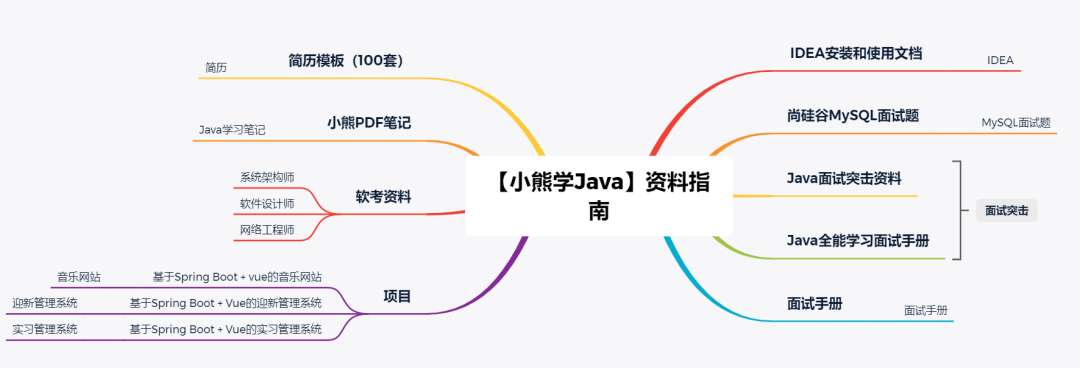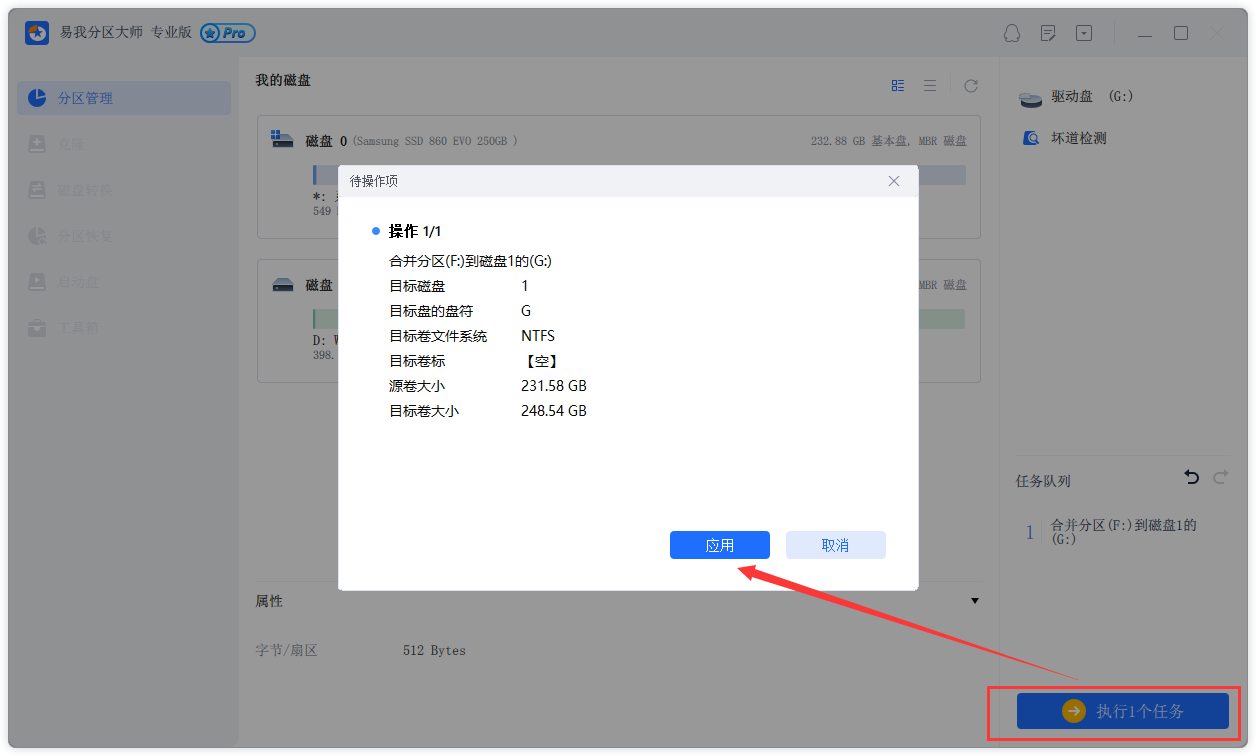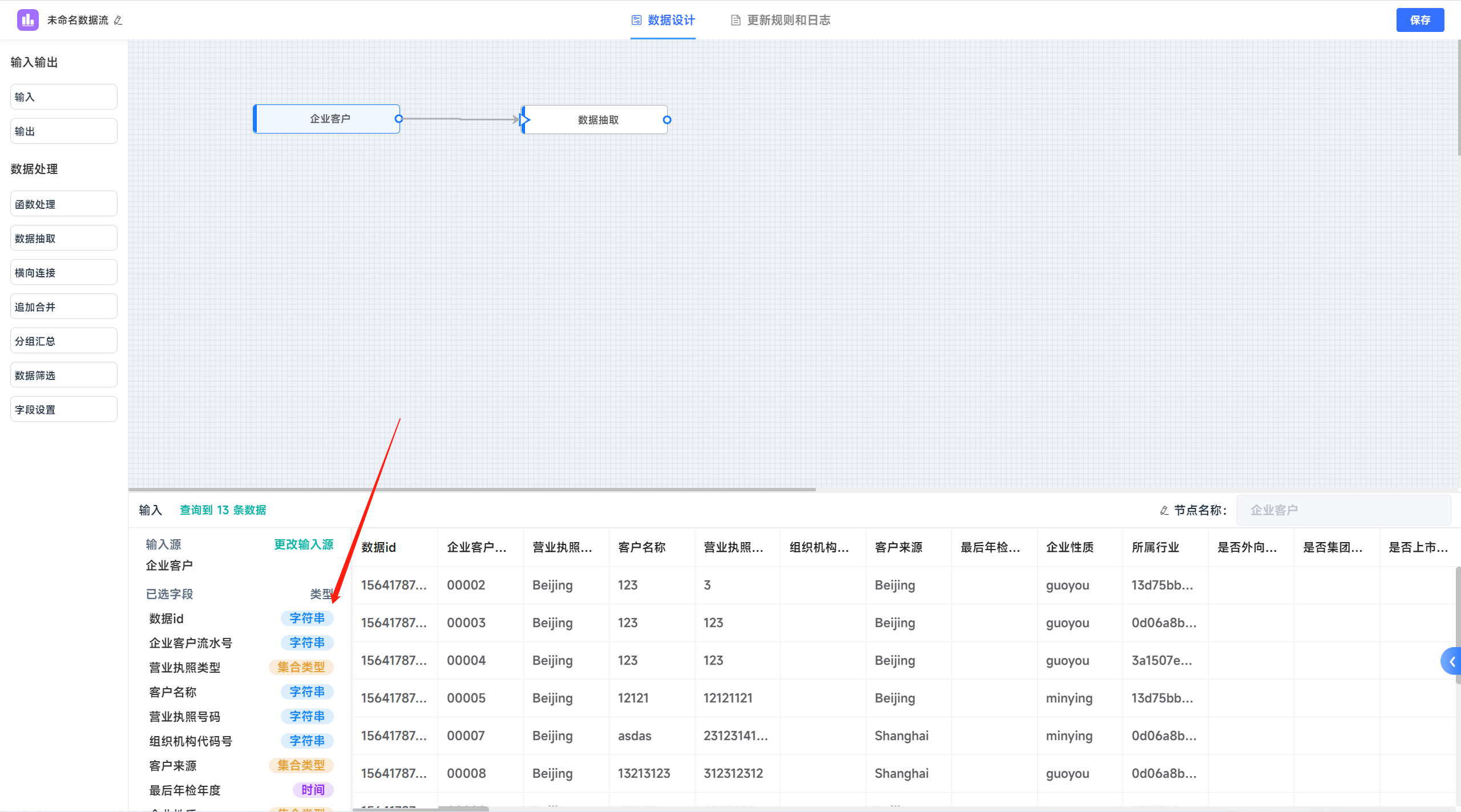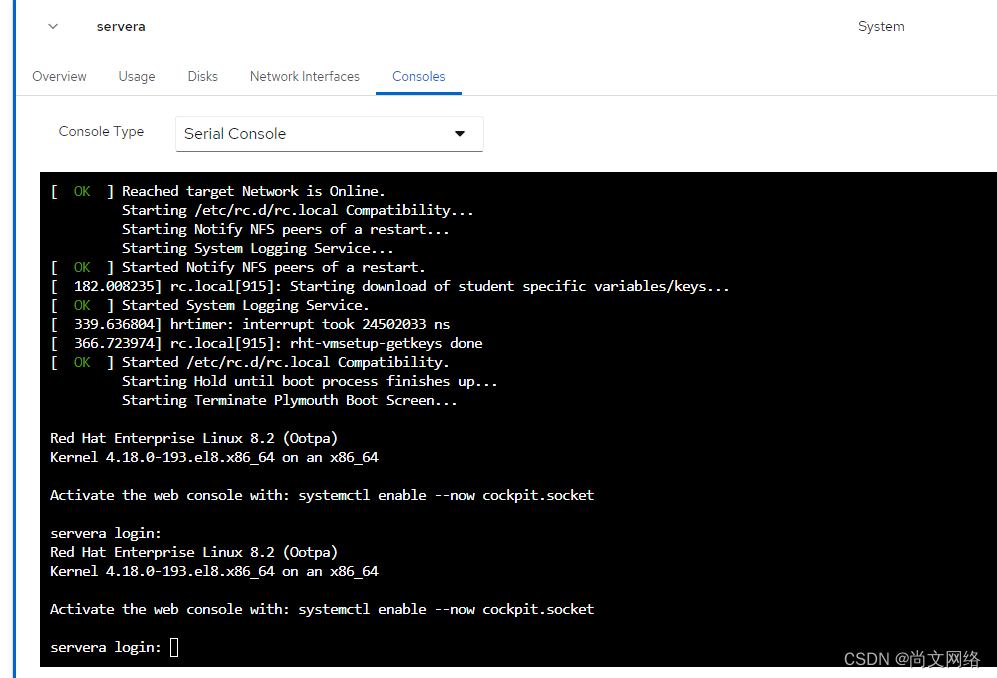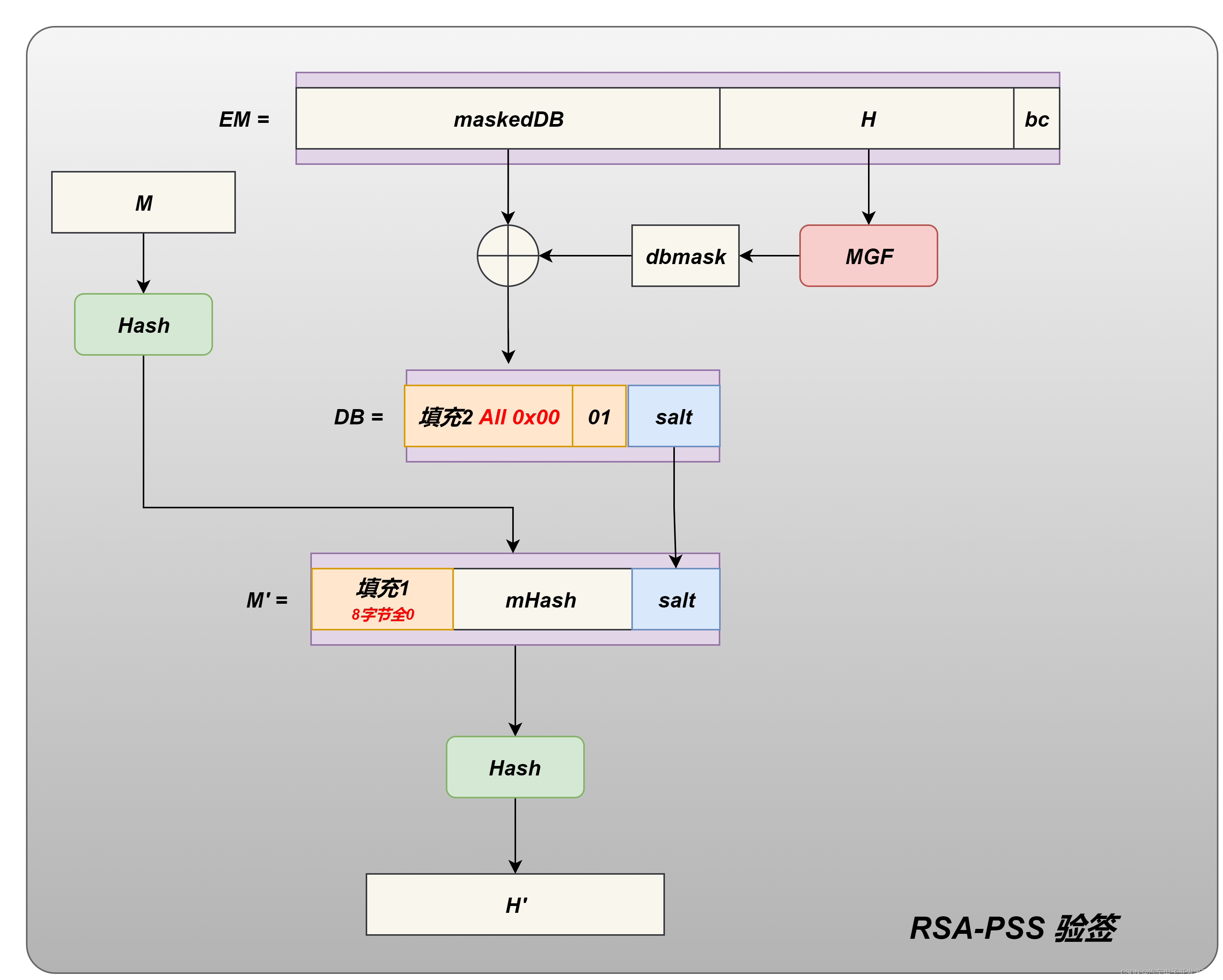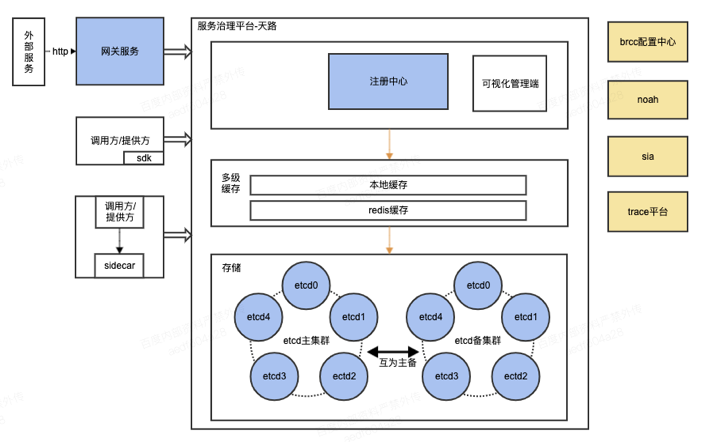时间与日期
- Date
- SimpleDateFormat
- Calendar
- JDK8新增日期类
- 概述LocalDate、LocalTime、LocalDateTime
- Instant时间戳
- DateTimeFormatter
- Duration/Period
- ChronoUnit
Date
Date类概述
Date类的对象在Java中代表的是当前所在系统的此刻日期时间。
Date的构造器

Date的常用方法

Date类记录时间的2种形式
形式1:日期对象
// 日期对象,创建一个Date类的对象,代表系统此刻日期时间对象
Date d = new Date();
System.out.println(d);
形式2:时间毫秒值
指的是从1970年1月1日 00:00:00走到此刻的总的毫秒数,应该是很大的。
// 时间毫秒值,获取当前时间毫秒值
long time = d.getTime();
System.out.println(time);
案例:请计算出当前时间往后走1小时121秒之后的时间是多少。
时间毫秒值 -> 日期对象

// 当前时间
Date d1 = new Date();
System.out.println(d1);
// 获取当前时间毫秒值
long time1 = System.currentTimeMillis();
// 往后走的1小时121秒
time1 += (60 * 60 + 121) * 1000;
// 把时间毫秒值转化成对应日期对象。
Date d2 = new Date(time1);
System.out.println(d2);
// 把时间毫秒值转化成对应日期对象
Date d3 = new Date();
d3.setTime(time1);
System.out.println(d3);
SimpleDateFormat
1.可以对Date对象或时间毫秒值格式化成我们喜欢的时间形式。
2.也可以把字符串的时间形式解析成日期对象。
格式化:
Date对象 ————> 2099年11月11日 11:11:
时间毫秒值 ————> 2099年11月11日 11:11:
解析:
2099年11月11日 11:11:11 ————> Date对象
时间形式一:日期类表示时间的代码:
public static void main(String [] args){
Date d = new Date();
System.out.print(d);
}
控制台输出:

时间形式二:时间毫秒值表示时间的代码:
Date d = new Date();
// 时间毫秒值,获取当前时间毫秒值
long time = d.getTime();
System.out.println(time);
控制台输出:

开发中常见的时间形式:

SimpleDateFormat的构造器

SimpleDateFormat的格式化方法

格式化的时间形式的常用的模式对象关系如下:

补充EEE代表星期几,a代表上午或下午
package snow.d2_simpledateformat;
import java.text.SimpleDateFormat;
import java.util.Date;
public class sfd {
public static void main(String[] args) {
// 日期对象
Date d = new Date();
System.out.println(d);
// 格式化这个日期对象,指定格式化的形式
SimpleDateFormat sdf = new SimpleDateFormat("yyyy年MM月dd日 HH:mm:ss EEE a");
// 开始格式化日期对象成为喜欢的字符串形式
String rs = sdf.format(d);
System.out.println(rs);
System.out.println("----------------");
// 格式化时间毫秒值 需求:请问121秒后的时间是多少
long timel = System.currentTimeMillis() + 121 *1000;
String rs2 = sdf.format(timel);
System.out.println(rs2);
}
}
SimpleDateFormat解析字符串时间成为日期对象

案例:请计算出2021年08月06日 11点11分11秒,往后走2天14小时49分06秒后的时间是多少。
package snow.d2_simpledateformat;
import java.text.ParseException;
import java.text.SimpleDateFormat;
import java.util.Date;
public class SimpleDateFormatDemo2 {
public static void main(String[] args) throws ParseException {
// 使用SimpleDateFormat解析字符串时间成为日期对象
// 定义字符串时间
String dateStr = "2021年08月06日 11:11:11";
// 把字符串时间解析成日期对象
SimpleDateFormat sdf = new SimpleDateFormat("yyyy年MM月dd日 HH:mm:ss");
Date d = sdf.parse(dateStr);
// 往后走2天14小时49分06秒
long time = d.getTime() + (2L*24*60*60 + 14*60*60 + 49*60 +6)*1000;
// 格式化这个时间毫秒值就是结果
System.out.println(sdf.format(time)); // 2021年08月09日 02:00:17
}
}
案例2:秒杀活动
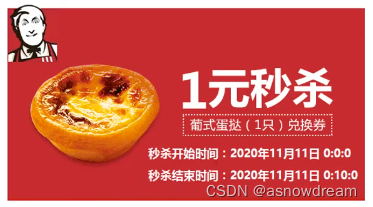
需求:
1.小贾下单并付款的时间为:2020年11月11日 0:03:47
2.小皮下单并付款时间为:2020年11月11日 0:10:11
3.用代码说明这两位同学有没有参加上秒杀活动?
分析:
1.判断下单时间是否在开始到结束的范围内。
2.把字符串形式的时间变成毫秒值。
package snow.d2_simpledateformat;
import java.text.ParseException;
import java.text.SimpleDateFormat;
import java.util.Date;
public class SimpleDate {
public static void main(String[] args) throws ParseException {
// 开始和结束时间
String starTime = "2021年11月11日 00:00:00";
String endTime = "2021年11月11日 00:10:00";
// 小贾和小皮下单时间
String xiaojia = "2021年11月11日 00:03:47";
String xiaopi = "2021年11月11日 00:10:11";
// 解析时间
SimpleDateFormat sdf = new SimpleDateFormat("yyyy年MM月dd日 HH:mm:ss");
Date d = sdf.parse(starTime);
Date d1 = sdf.parse(endTime);
Date d3 = sdf.parse(xiaojia);
Date d4 = sdf.parse(xiaopi);
if(d3.after(d) && d3.before(d1)){
System.out.println("小贾秒杀成功,可以发货!");
}else {
System.out.println("很遗憾,小贾秒杀失败。");
}
if(d4.after(d) && d4.before(d1)){
System.out.println("小皮秒杀成功,可以发货!");
}else {
System.out.println("很遗憾,小皮秒杀失败。");
}
}
}
Calendar
1.Calendar代表了系统此刻日期对应的日历对象。
2.Calendar是一个抽象类,不能直接创建对象。
Calendar常用方法:
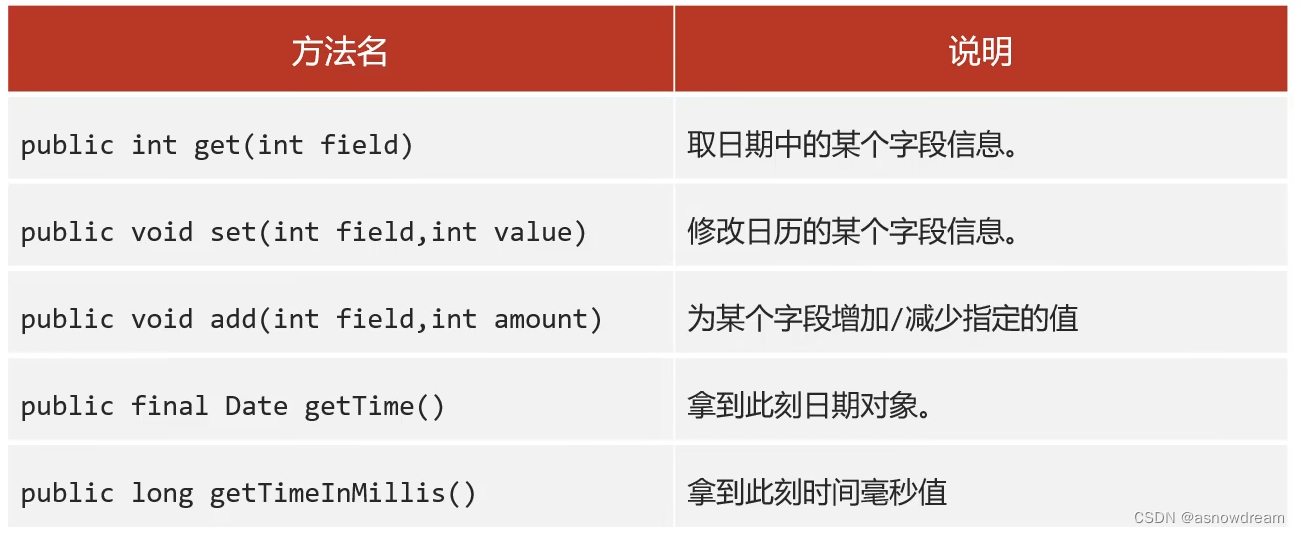
注意:calendar是可变日期对象,一旦修改后其对象本身表示的时间会产生变化。
package snow.d3_calendar;
import java.util.Calendar;
import java.util.Date;
public class CalendarDemo {
public static void main(String[] args) {
// 获取系统此刻日历对象
Calendar c = Calendar.getInstance();
System.out.println(c);
// 获取日历信息
int year = c.get(Calendar.YEAR);
System.out.println(year+"年");
int mm = c.get(Calendar.MONTH)+1;
System.out.println(mm+"日");
int days = c.get(Calendar.DAY_OF_YEAR);
System.out.println("今年第"+days+"天");
// 修改日历的某个字段信息
// c.set(Calendar.HOUR, 12);
// System.out.println(c);
// 为某个字段增加/减少指定的值
// 64天后的时间
c.add(Calendar.DAY_OF_YEAR, 64);
c.add(Calendar.MINUTE, 59);
// 此刻日期对象
Date d = c.getTime();
System.out.println(d);
// 此刻时间毫秒值
long time = c.getTimeInMillis();
System.out.println(time);
}
}
JDK8新增日期类
概述LocalDate、LocalTime、LocalDateTime
1.从java 8开始,Java.time包提供了新的日期和时间API,主要涉及的类型有:
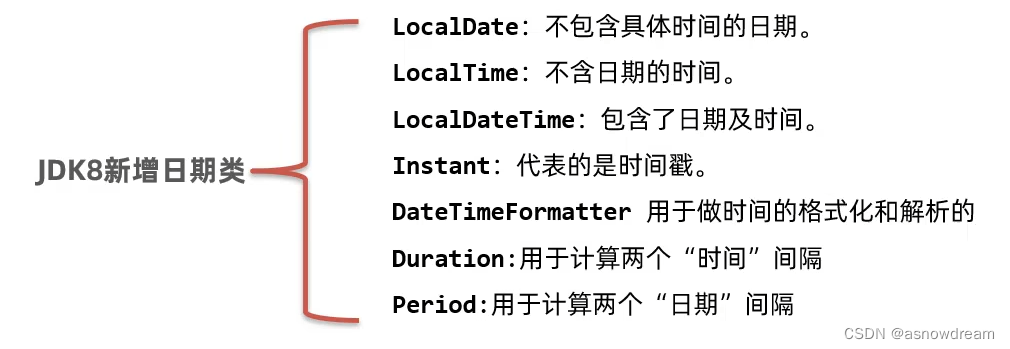
2.新增的API严格区分了时刻、本地日期、本地时间,并且,对日期和时间进行运算更加方便。
3.其次,新API的类型几乎全部是不变类型(和String的使用类似),可以放心使用不必担心被修改。
LocalDate、LocalTime、LocalDateTime分别表示日期,时间,日期时间对象,他们的类的实例是不可变的对象。他们三者构建对象和API都是通用的。
构建对象的方式如下:

LocalDate:
package snow.d3_calendar;
import java.time.LocalDate;
import java.time.Month;
public class DemolocalDate {
public static void main(String[] args) {
// 获取本地日期对象
LocalDate nowDate = LocalDate.now();
System.out.println("今天的日期:"+nowDate);
int year = nowDate.getYear();
System.out.println("year:"+year);
int month = nowDate.getMonthValue();
System.out.println("month:"+month);
int day = nowDate.getDayOfMonth();
System.out.println("day:"+day);
int dayofyear = nowDate.getDayOfYear();
System.out.println("当年第"+dayofyear+"天");
System.out.println("星期英文:"+nowDate.getDayOfWeek());
System.out.println("星期:"+nowDate.getDayOfWeek().getValue());
System.out.println("月份英文:"+nowDate.getMonth());
System.out.println("月份:"+nowDate.getMonth().getValue());
System.out.println("-----------------");
LocalDate bt = LocalDate.of(2012, 11, 11);
System.out.println(bt);// 直接传入对应的年月日
// 指定日期
System.out.println(LocalDate.of(2012, Month.NOVEMBER, 11));
}
}
LocalTime:
package snow.d3_calendar;
import java.time.LocalDateTime;
import java.time.LocalTime;
import java.time.Month;
public class DemolocalTime {
public static void main(String[] args) {
// 获取本地时间对象
LocalTime nowTime = LocalTime.now();
System.out.println("今天的时间:"+nowTime);
int hour = nowTime.getHour();
System.out.println("时间:"+hour);
int minute = nowTime.getMinute();
System.out.println("分:"+ minute);
int second = nowTime.getSecond();
System.out.println("秒:"+ second);
int nano = nowTime.getNano();
System.out.println("纳秒:"+nano);
System.out.println("------------------");
System.out.println("时分:"+LocalTime.of(8, 20));
System.out.println("时分秒:"+LocalTime.of(8, 20,30));
System.out.println("时分秒纳秒:"+LocalTime.of(8, 20,30,150));
LocalTime mTime = LocalTime.of(8, 20,30,150);
System.out.println("----------------");
System.out.println("年月日时分:"+ LocalDateTime.of(2012,11,11,8,20));
System.out.println("年月日时分:"+ LocalDateTime.of(2012,Month.NOVEMBER,11,8,20));
System.out.println("年月日时分秒:"+ LocalDateTime.of(2012,11,11,8,20,30));
System.out.println("年月日时分秒:"+ LocalDateTime.of(2012,Month.NOVEMBER,11,8,20,30));
System.out.println("年月日时分秒毫秒:"+ LocalDateTime.of(2012,11,11,8,20,30,20));
System.out.println("年月日时分秒毫秒:"+ LocalDateTime.of(2012,Month.NOVEMBER,11,8,20,30,20));
}
}
LocalDateTime:
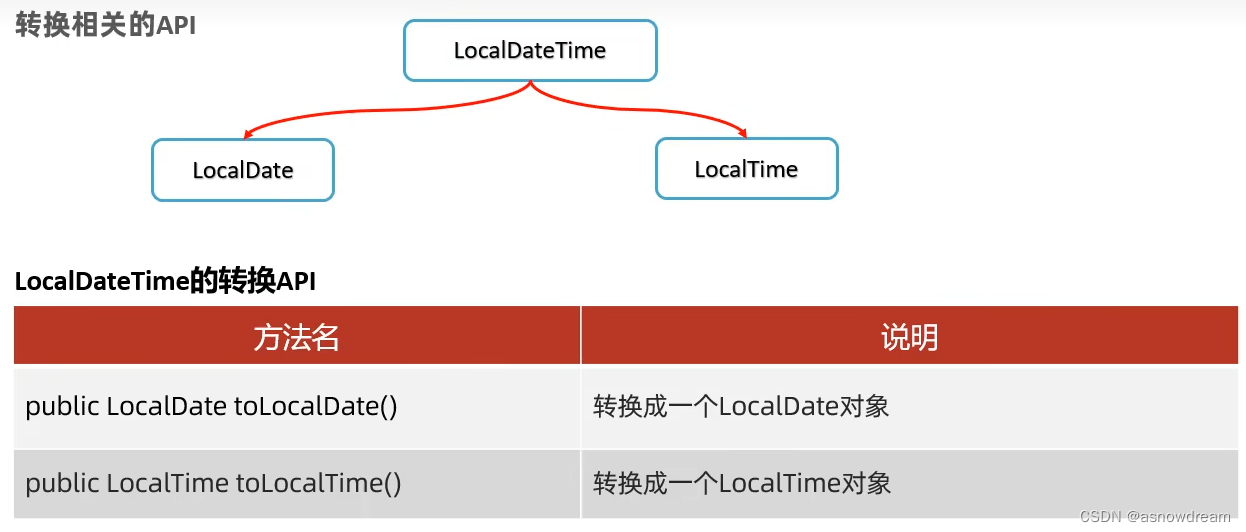
package snow.d3_calendar;
import java.time.LocalDate;
import java.time.LocalDateTime;
import java.time.LocalTime;
public class DemoLocaTime {
public static void main(String[] args) {
// 日期时间
LocalDateTime nowDateTime = LocalDateTime.now();
System.out.println("今天是:"+nowDateTime);
System.out.println("年:"+nowDateTime.getYear());
System.out.println("月:"+nowDateTime.getMonthValue());
System.out.println("日:"+nowDateTime.getDayOfMonth());
System.out.println("时:"+nowDateTime.getHour());
System.out.println("分:"+nowDateTime.getMinute());
System.out.println("秒:"+nowDateTime.getSecond());
System.out.println("纳秒:"+nowDateTime.getNano());
// 日:当年的第几天
System.out.println("今年第几天:"+nowDateTime.getDayOfYear());
// 星期
System.out.println("星期英语:"+nowDateTime.getDayOfWeek());
System.out.println("星期:"+nowDateTime.getDayOfWeek().getValue());
// 月份
System.out.println("月份英语:"+nowDateTime.getMonth());
System.out.println("月份:"+nowDateTime.getMonth().getValue());
// 日期对象
LocalDate Id = nowDateTime.toLocalDate();
System.out.println(Id);
// 时间对象
LocalTime It = nowDateTime.toLocalTime();
System.out.println(It.getHour());
System.out.println(It.getMinute());
System.out.println(It.getSecond());
}
}
修改相关的API
1.LocalDateTime综合了LocalDate和LocalTime里面的方法,所以下面只用LocalDate和LocalTime来举例。
2.这些方法返回的是一个新的实例引用,因为LocalDateTime、LocalDate、LocalTime都是不可变的。

package snow.d3_calendar;
import java.time.LocalDate;
import java.time.LocalTime;
import java.time.MonthDay;
public class DemoUpdateTime {
public static void main(String[] args) {
LocalTime nowTime = LocalTime.now();
System.out.println("当前时间:"+nowTime);
System.out.println("一小时前:"+nowTime.minusHours(1));
System.out.println("一分钟前:"+nowTime.minusMinutes(1));
System.out.println("一秒前:"+nowTime.minusSeconds(1));
System.out.println("一纳秒:"+nowTime.minusNanos(1));
System.out.println("--------------------");
System.out.println("一小时后:"+nowTime.plusHours(1));
System.out.println("一分钟后:"+nowTime.plusMinutes(1));
System.out.println("一秒钟后:"+nowTime.plusSeconds(1));
System.out.println("一纳秒后:"+nowTime.plusNanos(1));
System.out.println("----------------");
// 不可变对象,每次修改产生新对象!
System.out.println(nowTime);
System.out.println("----------------");
LocalDate myDate = LocalDate.of(2012, 9, 21);
LocalDate nowDate = LocalDate.now();
System.out.println("今天是2022-09-06吗?"+nowDate.equals(myDate));
System.out.println(myDate+"是否在"+nowDate+"之前?"+myDate.isBefore(nowDate));
System.out.println("---------------");
// 判断今天是否是你的生日
LocalDate birDate = LocalDate.of(2022, 3, 14);
LocalDate nowDate1 = LocalDate.now();
// 取出月份和日放入对象
MonthDay birMd = MonthDay.of(birDate.getMonthValue(), birDate.getDayOfMonth());
MonthDay nowMd = MonthDay.from(nowDate1);
System.out.println("今天是你的生日吗?"+birMd.equals(nowMd));
}
}
Instant时间戳
1.JDK8获取时间戳特别简单,且能更丰富。Instant类由一个静态的工厂方法now()可以返回当前时间戳。
Instant instant = Instant.now();
System.out.println("当前时间戳是:"+instant);
Date date = Date.from(instant);
System.out.println("当前时间戳是:"+date);
instant = date.toInstant();
System.out.println(instant);
2.时间戳是包含日期和时间的,与java.util.Date很类似,事实上Instant就是类似JDk8以前的Date。
3.Instant和Date这两个类可以进行转换。
package snow.d4_instant;
import java.time.Instant;
import java.time.ZoneId;
import java.util.Date;
public class InstantDemo {
public static void main(String[] args) {
// 得到一个Instant时间戳对象(世界标准时间)
Instant instant = Instant.now();
System.out.println("当前时间戳是:"+instant);
// 系统此时的时间戳怎么办?
Instant instant1 = Instant.now();
System.out.println(instant1.atZone(ZoneId.systemDefault()));
// Instant对象转化为Date对象
Date date = Date.from(instant);
System.out.println("当前时间戳是:"+date);
// Date对象转化为Instant对象
instant = date.toInstant();
System.out.println(instant);
}
}
DateTimeFormatter
1.在JDK8中,引入了一个全新的日期与时间格式器DateTimeFormatter。
2.正反都能调用format方法。
package snow.d5_DateTimeFormatter;
import java.time.LocalDateTime;
import java.time.format.DateTimeFormatter;
public class datetimeformatterDemo {
public static void main(String[] args) {
// 本地此刻 日期时间 对象
LocalDateTime ldt = LocalDateTime.now();
System.out.println(ldt);
// 解析 格式化器
DateTimeFormatter dtf = DateTimeFormatter.ofPattern("yyyy-MM-dd HH:mm:ss EEE a");
// 正向格式化
String ldtStr1 = dtf.format(ldt);
System.out.println(ldtStr1);
// 逆向格式化
String ldtStr = ldt.format(dtf);
System.out.println(ldtStr);
// 解析字符串时间
DateTimeFormatter dtf1 = DateTimeFormatter.ofPattern("yyyy-MM-dd HH:mm:ss");
String dateStr = "2022-11-11 11:11:11";
// 解析当前字符串时间成为本地日期时间对象
LocalDateTime ldt1 = LocalDateTime.parse(dateStr,dtf1);
System.out.println(ldt1);
// 获取当前日期在本年中的天数
System.out.println(ldt1.getDayOfYear());
}
}
Duration/Period
Period
1.在Java8中,我们可以使用以下类来计算日期间隔差异:java.time.Period
2.主要是Period类方法getYears(),getMonths()和getDays来计算,只能精确到年月日。
3.用于LocalDate之间的比较。
package snow.d5_period;
import java.time.LocalDate;
import java.time.Period;
public class periodDemo {
public static void main(String[] args) {
// 当前本地 年月日
LocalDate today = LocalDate.now();
System.out.println(today);
// 出生的年月日
LocalDate birthDate = LocalDate.of(2000, 3, 5);
System.out.println(birthDate);
// 返回一个日期间隔差对象
Period period = Period.between(birthDate, today);
System.out.printf("年龄:%d年%d月%d日",period.getYears(),period.getMonths(),period.getDays());
}
}
Duration
1.在Java8中,可以使用以下类来计算时间间隔差异:Java.time.Duration
2.提供了使用基于时间的值测试量时间量的方法。
3.用于LocalDateTime之间的比较。也可以用于Instant之间的比较。
package snow.d5_period;
import java.time.Duration;
import java.time.LocalDateTime;
public class DemoDuration {
public static void main(String[] args) {
// 本地日期时间对象。
LocalDateTime today = LocalDateTime.now();
System.out.println(today);
// 出生的日期时间对象
LocalDateTime birthDate = LocalDateTime.of(2000,03,05,03,05,05);
System.out.println(birthDate);
// 返回时间差对象
Duration duration = Duration.between(birthDate, today);
System.out.println("两个时间相差天数:"+duration.toDays()+"两个时间相差小时"+duration.toHours()+"两个时间相差分钟"+duration.toMinutes()+"两个时间相差毫秒"+duration.toMillis()+"两个时间相差纳秒"+duration.toNanos());
}
}
ChronoUnit
ChronoUnit类可用于在单个时间单位内测量一段时间,这个工具类是最全的,可以用于比较所有的时间单位。
package snow.d5_period;
import java.time.LocalDateTime;
import java.time.temporal.ChronoUnit;
public class DemoChronounit {
public static void main(String[] args) {
// 本地此刻时间对象
LocalDateTime today = LocalDateTime.now();
System.out.println(today);
// 生日时间
LocalDateTime birthDate = LocalDateTime.of(2000, 03, 05, 11, 12, 32);
System.out.println(birthDate);
System.out.println("相差的年数:"+ ChronoUnit.YEARS.between(birthDate, today));
System.out.println("相差的月数:"+ ChronoUnit.MONTHS.between(birthDate, today));
System.out.println("相差的周数:"+ ChronoUnit.WEEKS.between(birthDate, today));
System.out.println("相差的天数:"+ ChronoUnit.DAYS.between(birthDate, today));
System.out.println("相差的时数:"+ ChronoUnit.HOURS.between(birthDate, today));
System.out.println("相差的分数:"+ ChronoUnit.MINUTES.between(birthDate, today));
System.out.println("相差的秒数:"+ ChronoUnit.SECONDS.between(birthDate, today));
System.out.println("相差的毫秒数:"+ ChronoUnit.MILLIS.between(birthDate, today));
System.out.println("相差的微秒数:"+ ChronoUnit.MICROS.between(birthDate, today));
System.out.println("相差的纳秒数:"+ ChronoUnit.NANOS.between(birthDate, today));
System.out.println("相差的半天数:"+ ChronoUnit.HALF_DAYS.between(birthDate, today));
System.out.println("相差的十年数:"+ ChronoUnit.DECADES.between(birthDate, today));
System.out.println("相差的世纪(百年)数:"+ ChronoUnit.CENTURIES.between(birthDate, today));
System.out.println("相差的千年数:"+ ChronoUnit.MILLENNIA.between(birthDate, today));
System.out.println("相差的纪元数:"+ ChronoUnit.ERAS.between(birthDate, today));
}
}
